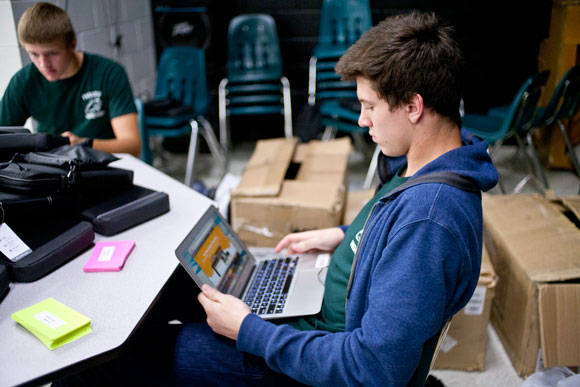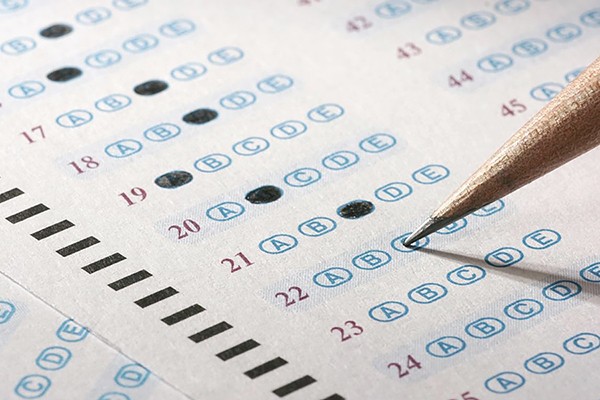As featured on Dr. Richard E. Cytowic’s blog on Psychology Today: The Fallable Mind
https://www.psychologytoday.com/blog/the-fallible-mind/201508/poison-apple-technology-fads-make-your-kids-dumber
Your kids are getting dumber. We didn’t want to be the ones to tell you, but someone had to. The saddest part of this is that your kids are getting dumber because of what is going on in their schools. We know. We have been public school teachers for over thirty years. It is time this cat was let out of this bag. To be sure, your kid’s teachers are working harder than ever, you parents are paying more attention than ever, and standards are higher than ever. So what is causing your kids to get dumber? Let’s start with a little history.
The history of education is a history of fads. Readers of a certain age will likely remember the “open school” model, which was supposed to save education. The idea was that schools were to be built with no interior walls — so ideas would flow freely, man. Having endured one as a student, I assure you it was as bad as it sounds. Today, education is still riddled with fads that are supposed to save education. The “flipped classroom,” block scheduling, and Professional Learning Communities are all a part of the current wave of over-hyped supposed educational panaceas.
However, there is no fad in education today that consumes decision makers as much as the use of technology in the classroom. Superintendents of school districts large and small, urban and rural, rich and poor are often making it a goal to provide each student a digital device for use in school. Others have a “BYOD” (Bring Your Own Device) policy, which encourages students to have a digital device in school so it can be used in the classroom. The assumption is that educational technology is an unalloyed good. This assumption needs to be questioned. “How will the device be used in school?” would be a great starting question. “How will this help my child?” would be a great follow up. However, teachers or parents who dare ask such questions are often met with patronizing scoffs and are labeled as Luddites.
Education policymakers are often in the public’s crosshairs. They are constantly looking for the “next great thing” that will save education, and their own jobs. This fact is not lost on Dell, Microsoft, Apple and plenty of others who are a part the vanguard of the educational technology gold rush. Rupert Murdoch described this as a largely untapped $500 billion market. Firms put together slick presentations, woo the right policymakers, and – voila! – the solution is finally here: digital devices in the classroom.
Policymakers fall asleep feeling better, and CEO’s fall asleep feeling richer. The devices enter the classroom, and your child falls asleep feeling dumber. Why does that happen? It happens because of the disconnect between what is supposed to happen with these devices in the classroom and what does happen.
What the policymakers envision is that students will walk into Mrs. Bingleman’s first period history class and the Smart Board at the front of the room will be running a program that immediately captivates students as they wordlessly take their seats. Then they will all turn on their devices and interact with one another and with characters from history. They will ask one another and historical figures questions about the costs of the Civil War. A hologram of Abraham Lincoln will appear. Students will tweet questions to him, and he will hold the hands of the students and take them on a tour of the battlefield at Gettysburg. Students will then create a journal together, using Google Docs. This journal will explain all they have learned and how they are feeling. They will be a smarter, tighter-knit community and Hosannas will rain down.
As high school teachers, we can tell you what actually happens. It looks more like this: Mrs. Bingleman is using her Smart Board as a screen for a warm-up question asking about the Civil War. She has not been properly trained on how to use the Smart Board, so it functions most days as a screen. However, today she is going to try something new. She asks her class for their thoughts on the warm up question. However, students are not paying attention because they are watching a hilarious Youtube cartoon of a homicidal llama, or looking at pictures of what their friend ordered last night at Chipotle. A few students are also tweeting about how amped they are for Prom, which is only three months away. Mrs. Bingleman then asks students to connect to the school’s network so they can help build a word cloud on the Smart Board about the costs of the Civil War. The school’s network is down (again). Mrs. Bingleman has to run down to the network administrator’s office to report the problem. After only ten minutes, the network is back up and running. The word cloud starts to build. The first word is “fart.” It goes downhill from there.
Sadly for Mrs. Bingleman, she is being evaluated that day. After the lesson, she is horrified. She is called to meet with her administrator after school. Slump-shouldered, she slinks into the office. She is shocked to learn, however, that her lesson has earned top marks. The administrator knows it did not go well. However, the rubric this county is using wants primarily to know if educational technology is being used, and if it gave students a chance to collaborate and share thoughts. Mrs. Bingleman and her administrator look sheepishly at one another and sign the evaluation. Later that month, the lesson is highlighted on the county’s website.
The names have been changed to protect the innocent, but we have seen this scenario repeated time and again. The students learned nothing. They are one day dumber. The adults, though – at least the ones with a financial stake in this – have learned a great lesson: show a school system a cool looking toy and promise the world, and they’ll not only buy one laptop, they’ll buy hundreds or thousands. Suddenly, open schools don’t seem so bad.



